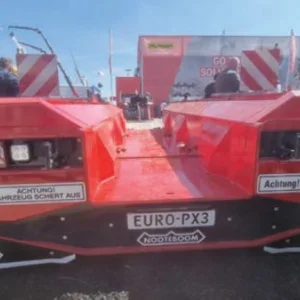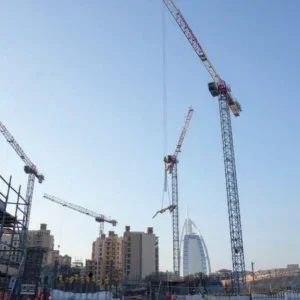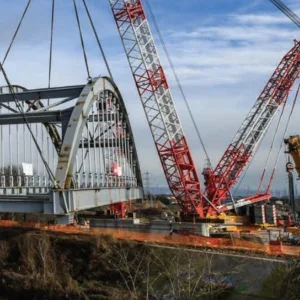Four years ago, controversy raged over plans by oil giant Shell to dispose of its redundant Brent Spar oil storage platform. Shell wanted to tow the 22-year old structure out into the Atlantic and sink it in deep water, but environmental pressure group Greenpeace forced the firm into a humiliating climb-down. Shell was forced to find an alternative method of getting rid of the platform, only to find that later studies proved it had been right all along and the Brent Spar contained nothing like the 5,000t of oil contaminants which Greenpeace had alleged.
While the protagonists were left licking their wounds in the aftermath, the fickle public quickly lost interest in the topic.
But for Shell and its contractors, the best part of the story was just beginning to unfold.
Shell’s alternative plan to dispose of Brent Spar was to cut the 29m diameter steel structure up and take the pieces ashore. But how to do it? The firm put the job out to tender and the winning bid came from an Anglo-Norwegian joint venture Wood-GMC.
An equal partnership between Scottish engineering firm Wood McKenzie and Maritime GMC of Norway, the joint venture came up with a neat and economical solution for Shell.
The plan was to remove the topside of the Brent Spar and then cut the bulk of the cylindrical storage platform into slices – called “cans” – which could be used as the foundations for a new quay at Mekjarvik, near Stavanger, for the Stavanger Port Authority.
“There is a quayside already there”, explains Shell’s project manager Steve Williams, “but GMC knew of Stavanger’s ambitions to expand this and improve the quay. So they worked with the Port Authority to design a quay which could use sections of the Brent Spar in the foundations.” Cutting the platform into slices is not as simple as it sounds. The Brent Spar first had to be towed from its temporary mooring in Erfjord to Yrkefjord, near Mekjarvik, where the work could be carried out. The cutting is itself a simple matter. The steel hull is about 20mm thick and can be cut with hand-held torches. The tricky bit is lifting the huge structure and the four “slices” into which it is cut.
Wood-GMC awarded the lifting contracts to British specialist PSC Heavy Lift and Dutch heavy lifting firm Heerema.
Heerema was brought in to remove the 1,800t topside, comprising the accommodation module, loading arm and other equipment. This has been taken away for scrapping, although much of the machinery is expected to be re-used. The lifting barge Thialf, with a maximum capacity of 12,000t, picked the topside in one piece.
Another Heerema vessel, the barge H851 (851ft, or 260m, long) is providing the lifting platform from which the remaining storage vessel – weighing a total 13,500t – will be lifted by degrees.
The lifting equipment for this phase is supplied by PSC Heavy Lift under two separate contracts. The first, placed by Heerema, is for an engineered strand jack lifting system to raise the Spar from the water so that it can be cut into sections; the second, placed directly by Wood-GMC is for provision of a travelling gantry system to carry each “can” along the deck of the H851 ready for the barge to transfer them to the site of the new quay at Mekjarvik.
In addition to the slow process of jacking the structure up, Heerema and PSC have to co-ordinate the movement of the gantry and the “cans” along the deck of the H851. This involves careful adjustment of the barge’s ballast tanks to ensure the whole vessel remains stable as the gantry and its massive load are skidded along the deck by longitudinally-acting hydraulic jacks.
This is a slow process, the progress of which is determined by the speed at which water can be pumped into and out of the barge’s ballast tanks.
Besides the 18 huge lifting jacks and the travelling gantry, H851 also has three saddle jib tower cranes – the tallest rising to 55 m above the deck – to carry out the many day-to-day lifting jobs required on this project.
“It’s all big stuff”, says Steve Williams. “There’s nothing here that you could man-handle”.






